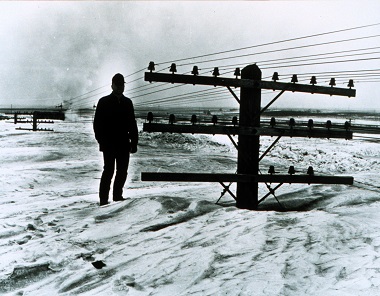Atmospheric Scientists Focus on High-Impact Weather Forecasting
 |
|
Researchers at the University at Albany's Department of Atmospheric and Environmental Sciences (DAES) are embarking on a three-year study designed to improve diagnostics and numerical models used in weather forecasting.
|
ALBANY, N.Y. (April 13, 2016) -- Ask anyone who's ever stocked up on bread and milk in anticipation of the big snowstorm that turned out to be a mere dusting -- predicting the weather is never easy.
Researchers at the University at Albany's Department of Atmospheric and Environmental Sciences (DAES) are working to change that as they embark on a three-year study designed to improve diagnostics and numerical models used in weather forecasting. The team is seeking to advance the forecasting and storm warning capabilities of the meteorological community for severe weather events, including heavy snowfall accumulations, damaging winds and hail, and tornadoes.
“We’re excited to focus on improving the forecasts of the types of high-impact weather events experienced in the Northeast U.S., especially those which have the ability to cause substantial societal and economic disruption," said the program's principal investigator, DAES Assistant Professor Kristen Corbosiero.
Specifically, the DAES research team will address:
• The 5–10 day predictability of major East Coast winter storms;
• The predictability and variability of lake-effect snow events; and
• The role of mountains and valleys in severe weather.
Emphasis will be placed on exploring the representation of these high-impact events in current weather models, understanding biases in these models, and developing diagnostics to improve forecaster awareness.
The DAES scientists will be working under a $450,000 National Oceanic and Atmospheric Administration (NOAA) Collaborative Science, Technology, and Applied Science (CSTAR) Program grant.
Led by Corbosiero with UAlbany co-investigators Andrea Lang, Justin Minder, Brian Tang, Ryan Torn, Lance Bosart, and Daniel Keyser, the new CSTAR award marks the sixth such grant DAES has received, totaling more than $1.8 million. Originally developed and led by Bosart and Keyser, the department has been continuously funded by the CSTAR program since 2001, supporting the applied research of more than 25 graduate students, many of whom work in NOAA research labs or for the National Weather Service (NWS).
Partnering with DAES in the research is the Albany NWS office, as well as eight other NWS offices across the eastern United States, the NOAA Storm Prediction and Weather Prediction Centers, the NOAA Earth and Science Research Laboratory, and the New York State Mesonet, based at UAlbany.
These partnerships represent a strong research to operations (R2O) pathway which plays a critical role in UAlbany’s mission. Ultimately, the research will facilitate the effective communication of model biases and potential improvements to developers, allow for the formal evaluation of promising visualization and diagnostic techniques, and apply scientific research findings to the development of NWS conceptual models and forecast checklists.
![]() For more news, subscribe to UAlbany's RSS headline feeds
For more news, subscribe to UAlbany's RSS headline feeds
A comprehensive public research university, the University at Albany-SUNY offers more than 120 undergraduate majors and minors and 125 master's, doctoral and graduate certificate programs. UAlbany is a leader among all New York State colleges and universities in such diverse fields as atmospheric and environmental sciences, business, education, public health,health sciences, criminal justice, emergency preparedness, engineering and applied sciences, informatics, public administration, social welfare and sociology, taught by an extensive roster of faculty experts. It also offers expanded academic and research opportunities for students through an affiliation with Albany Law School. With a curriculum enhanced by 600 study-abroad opportunities, UAlbany launches great careers.


